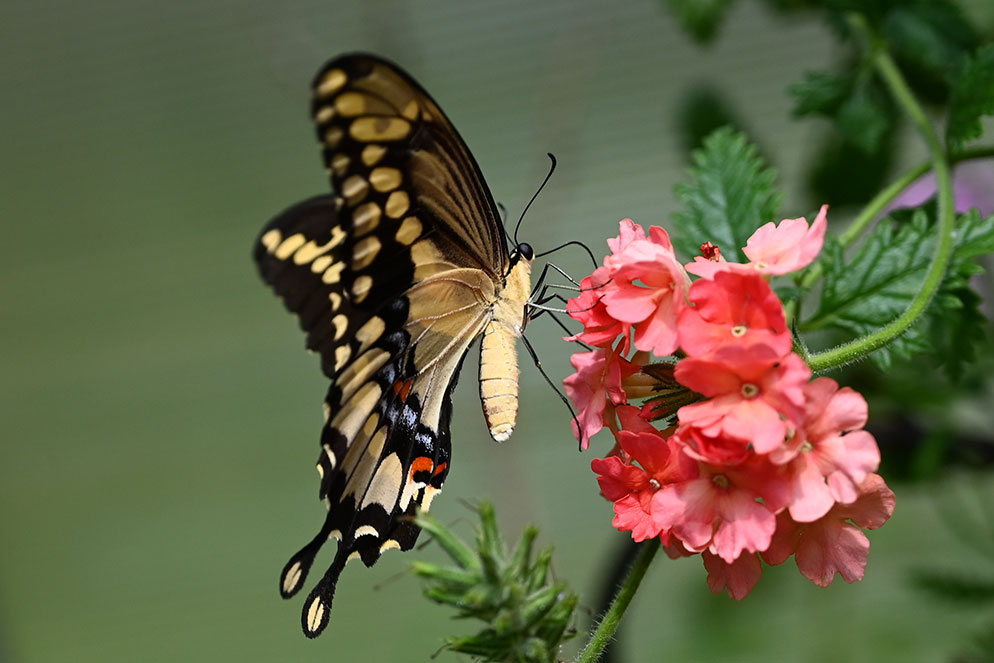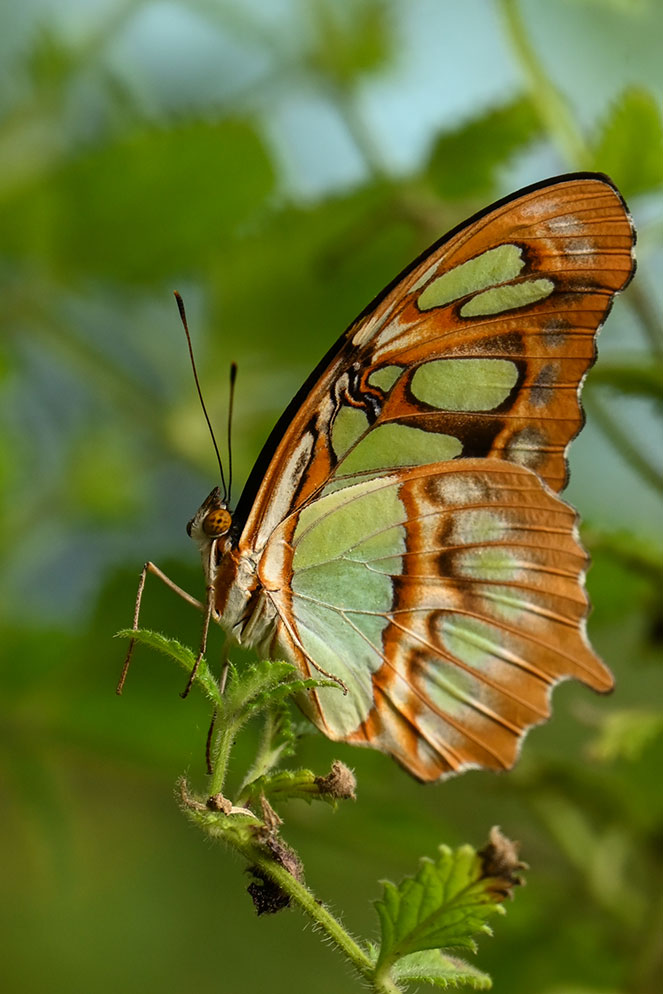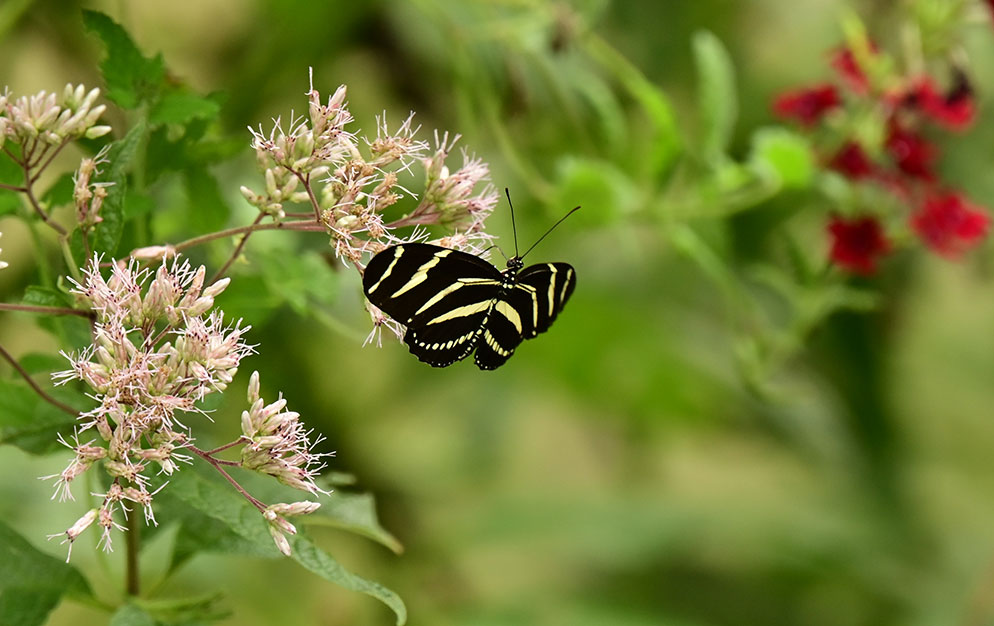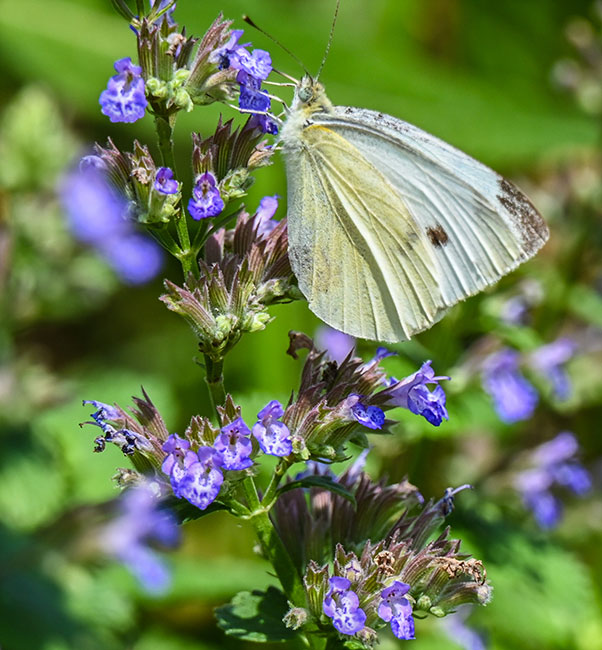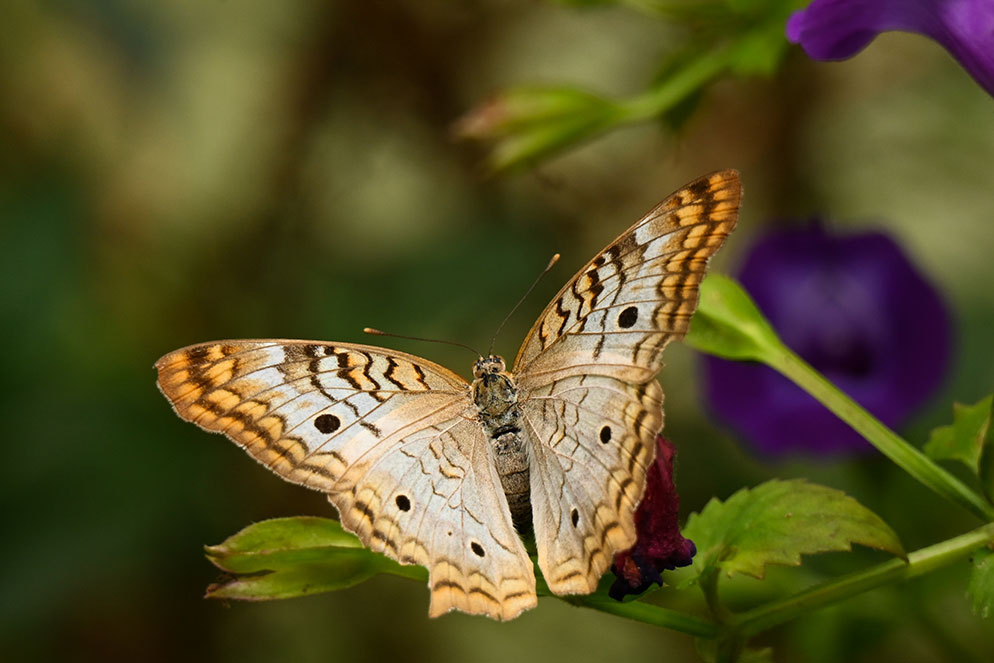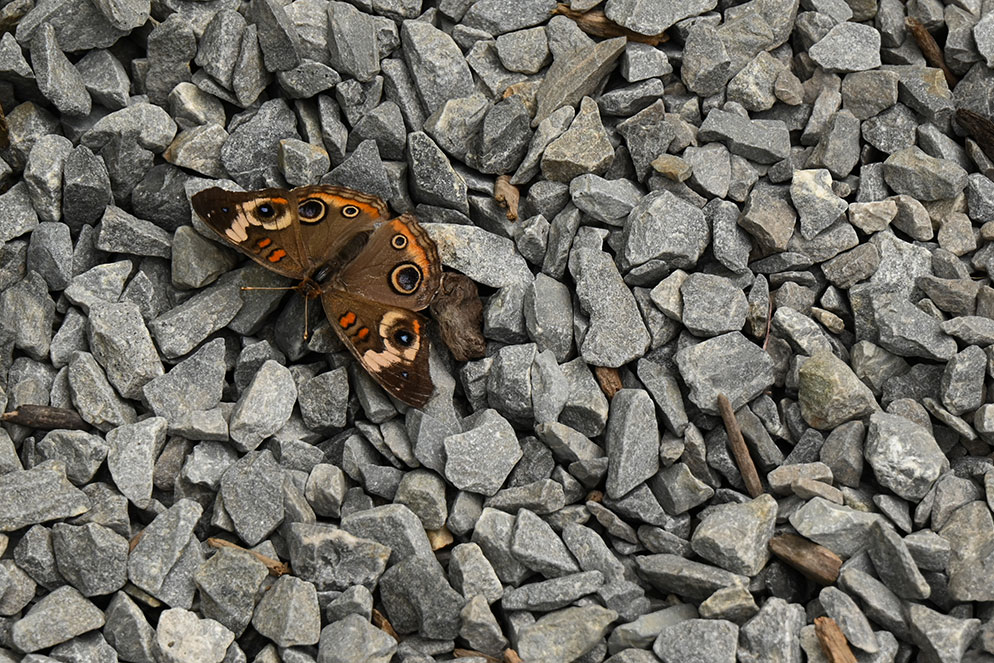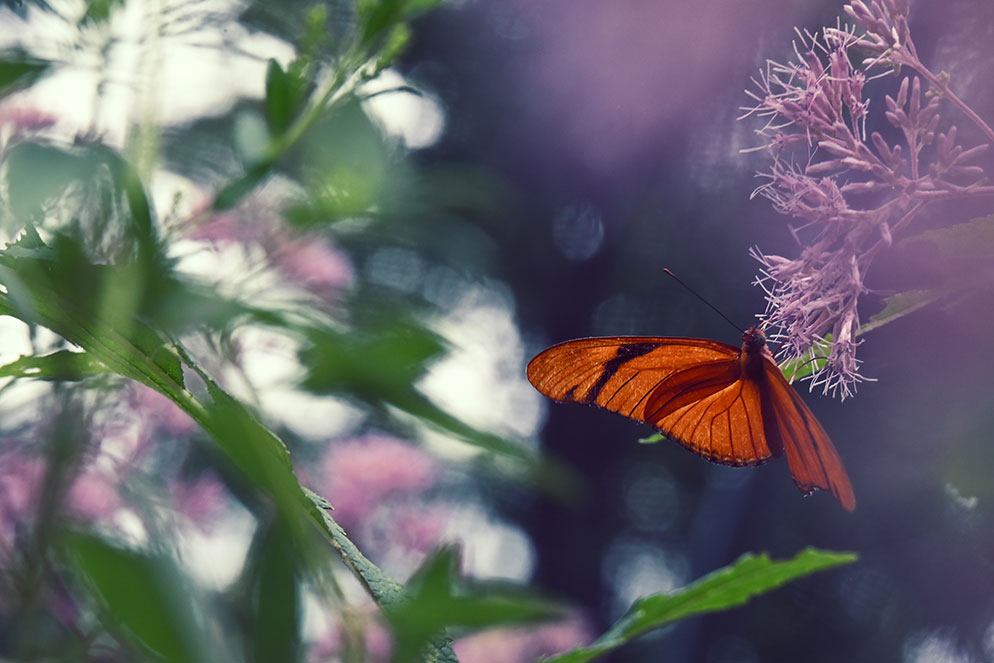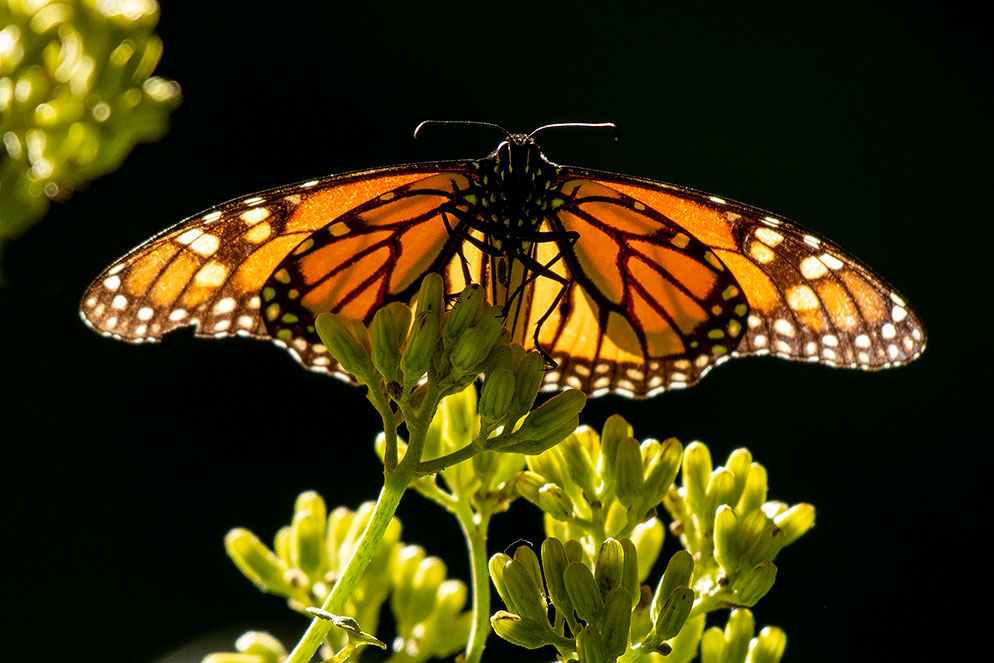Top 10 Tips for Taking Great Photos of Butterflies
Eastern Tiger Swallowtail butterfly
Photographing butterflies can be an enjoyable hobby. And, if you plant a butterfly friendly garden (more on that later), all you'll have to do is step outside your door to find them.
There’s no steadfast rule on how to photograph a butterfly. It's up to you. Photograph them with their wings open or closed or anywhere in between. Photograph them head on or in profile. Taking pictures of butterflies with their wings wide open or in profile allows you to capture their beautiful colors and intricate patterns, making them easier to identify. Or maybe you want to capture them in flight or drinking nectar from a flower.
Many of the same tips for photographing other types of wildlife should be followed for photographing butterflies.
Remember to always respect all wildlife, small and large. Don't stress wildlife you're photographing in any way just to get a photo.
Malachite butterfly
Bumblebee and Monarch butterfly on a flower
Time of day matters. Shoot early morning or late afternoon for the best quality of light. Also, butterflies tend to warm themselves in the sun once it rises, so you may find them easier to photograph before they begin flying.
Zebra Longwing butterfly
Get close to your subjects
Macro to record minute details. Use a macro lens or a telephoto lens to get close and fill the frame. Butterflies will often let you get close enough to photograph with a macro lens if you approach quietly and slowly. If you’re using a COOLPIX camera, turn on the Macro mode to get super close to your subject.
Go telephoto. If you don’t have a macro lens, use a telephoto to fill the frame instead. Only have the one lens that came with your camera? You may be able to get closer than you think. Check the camera’s manual to see what the closest focusing distance is.
DX Crop on a full-frame (FX) camera. If you lack a telephoto lens that would allow you to get really close to your subject and you’re using a full-frame camera, select the DX Crop Mode which will give you a 1.5x crop. Or you can choose to crop later on the computer.
Painted Lady butterfly
Cabbage White butterfly
Shoot wide open. Bokeh, the soft, out of focus blur that you get in a photograph when shooting wide open will help you separate your butterfly subjects from the background.
White Peacock butterfly
Basics of Composition. Composition is often a photographer’s own personal preference, whether to zoom or crop in tight, or compose a subject with the environment around them. Photographing butterflies is no different. Getting in for a tight shot can show off the fine, delicate detail of the butterfly’s body and composing more loosely, to show the flowers or branches the butterfly is resting on will also make for a pleasing image.
Common Buckeye butterfly
Adhere to the rule of thirds. When you look through your viewfinder or at the LCD, imagine a tic-tac-toe grid over the scene. Some Nikon cameras even have a menu item that allows you to turn on gridlines in the viewfinder as a guide to help you frame your image and don't worry, the lines won’t show up in your final picture.
Notice where the lines intersect. The rule of thirds suggests that these points are the best places to position your subject. Doing so will generally result in a pleasantly balanced composition.
Lean into the frame, not towards the edges. When photographing wildlife its best to have them looking into the frame. So leave more space on the side of the frame where the action is headed. It looks more natural that way and lets the viewer have a feel for where the subject is going.
Look for patterns and textures. Subjects with repetitive patterns can make for interesting photographs and most butterflies have repetitive patterns on their wings. Textures can also work to your advantage in creating images with strong compositions.
Julia Heliconian butterfly photographed using a Creative Picture Control
Get Creative. Photograph the butterflies in their natural coloring or use a Creative Picture Control for a wild looking image. If you’re thinking that you might like to do something this creative but aren’t sure whether you’ll like the outcome or not, shoot. RAW (Nikon NEF or NRW depending upon your camera). If your camera offers it, you might want to shoot RAW + JPG so you can always go back to the RAW files.
Add fill light. You could even use a small reflector or accessory Speedlight flash to add some fill light when you’re taking pictures in the shade or on an overcast day.
Know Your Subject
The lifecycle of moths and butterflies begin as eggs that are laid, which turn into larvae, grow into caterpillars and then transform into a moth or butterfly which starts the cycle over again.
Try to learn about and photograph the different caterpillars you see too.
It is also helpful to be able to identify the different parts of a butterfly's body. There's the head, on which you'll find the antennae, compound eyes and proboscis (this is what a butterfly uses to drink and when a it isn't drinking, the prroboscis will be coiled neatly). The main body of a butterfly is made up of the thorax and the abdomen. There are 3 pairs of legs, the forelegs, midlegs and hindlegs. And lastly the wings—forewings (above) and hindwings (below).
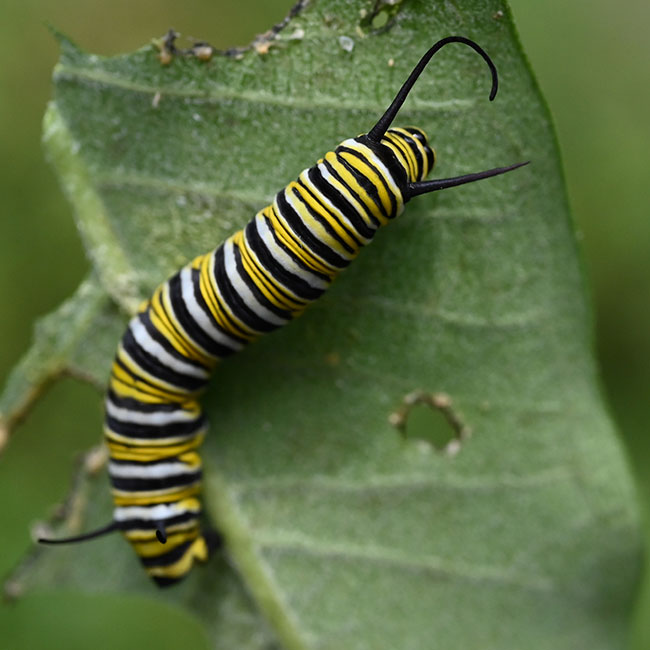
This caterpillar will eventually metamorphasize into a Monarch butterfly
The Great Monarch Butterfly Migration. Millions of Monarchs migrate south for the winter.
The great Monarch butterfly migration
Most butterflies live for only weeks at a time, the average is between two to six weeks, but Monarch butterflies are unique. Some Monarchs migrate south for the winter and hibernate until Spring.
Millions of Monarch butterflies make the Great Monarch Butterfly Migration each fall, migrating south for the winter. Those butterflies who live east of the Rockies will travel to Mexico. You can visit the Monarch Butterfly Reserve, which is open to visitors in the fall.
The Monarch butterflies that live west of the Rockies will migrate to Southern California. Search the internet to find locations you can visit once they begin arriving, which is usually around October.
And, those butterflies that reach their wintering grounds will live through the winter and begin the migration back north in the spring.
Monarch butterfly
Where Can you Find Butterflies?
Visit a butterfly house. You can often find butterfly houses (they aren’t really a house at all, but an enclosed building-like structure made up of large screen panels and partial walls). Butterfly houses often have a knowledgeable volunteer or staff member available to answer questions. Some may have caterpillars as well as butterflies, and there are plenty of flowering plants for the butterflies to gather nectar from.
Parks and botanical gardens often include flowering plants that attract butterflies. You just need to know where to look.
Plant a butterfly friendly garden and include flowering plants that butterflies can get nectar from, even plants like milkweed for caterpillars to devour. You might even catch the sight of a caterpillar creating a chrysalis in which to metamorphosize into a butterfly. There are many gardening websites that explain which species of plants would be appropriate for your area that would attract butterflies.

